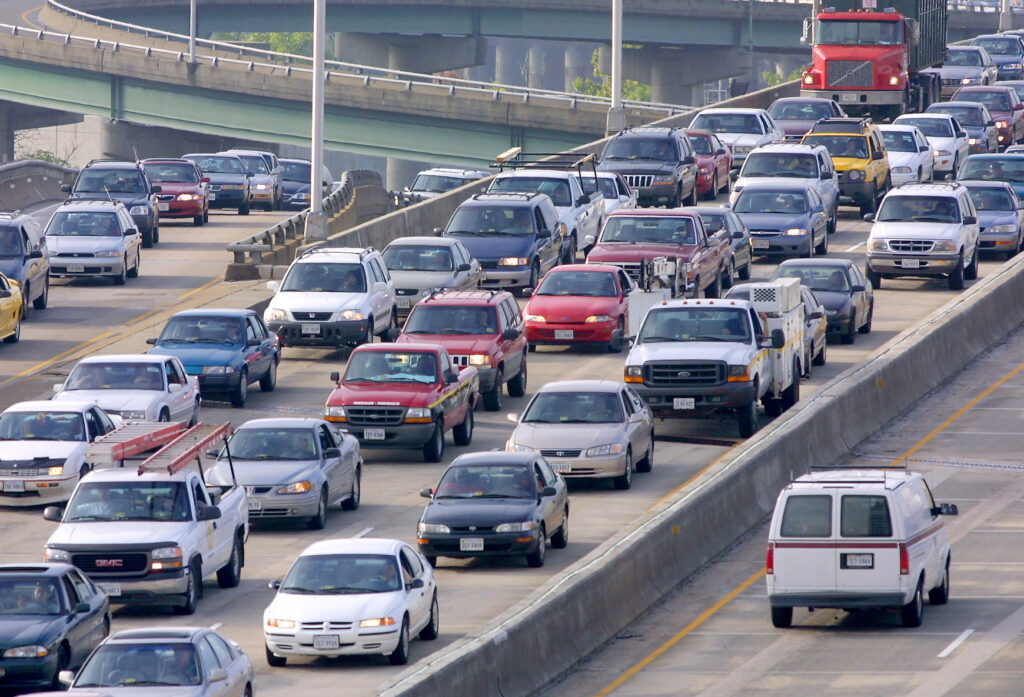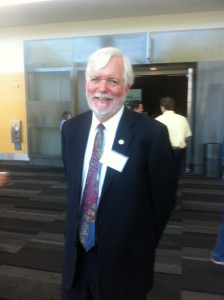
How Can a State Department of Transportation Do Right by the Locals?
A key theme in a recent Washington State DOT conference was a recognition that the state DOT needs to do more to engage with local constituents and agencies and meet local needs, particularly in cities. Those cities are the engines of economic growth, and where the default approach of the past half-century — road widening to speed driving at the expense of other goals — did not, does not, and will not work.

A sizable crowd at the WSDOT Innovations & Partnerships in Transportation summit
I attended the conference on September 22, entitled Innovations & Partnerships in Transportation, which strived to train WSDOT staff and local agencies in Washington State on partnership and innovation.
With Secretary of Transportation Lynn Peterson at the helm since early 2013, WSDOT is one state DOT that is working hard to be more innovative and responsive to evolving transportation needs. T4A member Transportation Choices Coalition worked with T4A and Smart Growth America to organize a training for WSDOT leadership staff in Olympia in November, 2014 on performance-based planning. In some ways, the 2014 training helped seed interest in this most recent symposium of WSDOT and local agency staff from across the state.

Roger Millar, recently departed from SGA, is starting work as Deputy Secretary at WSDOT in October.
Many of the same speakers we brought in 2014 came back to discuss many of the same issues in this bigger forum. Jeffrey Tumlin of Nelson Nygard returned to speak about new approaches to practical design. SGA’s Roger Millar, also featured prominently in the 2014 workshop, was incidentally just hired as WSDOT’s Deputy Secretary starting in October.
State DOTs typically concern themselves with longer distance or inter-city travel, and not necessarily with the local needs that drive local economies, but this conference pointed to a different direction for WSDOT. Multiple speakers discussed the changes leading the agency to a more multimodal approach to transportation that does a better job of meeting the needs of cities and their residents. Households are shrinking, Millennials especially are driving less, buying fewer cars and getting their drivers licenses later if at all. More people are moving to downtowns and walkable neighborhoods, and companies are moving to these places to attract and retain talent.
The economy is shifting from an emphasis on ownership to an emphasis on sharing, experiences, and more efficient use of resources.
To illustrate the pace of change we could expect to see because of new mobility options like Lyft, Uber, bike share and autonomous cars, speaker Gabe Klein, a former director of both Chicago’s and D.C.’s DOT, asked the audience how many of them owned a smart phone 10 years ago. No one raised their hands — smartphones weren’t even available just ten short years ago, but today nearly every participant owned one. “That’s how fast change can take place.”
Several speakers, Jeffrey Tumlin in particular, talked openly about the problem of induced demand — the phenomenon where increased roadway capacity induces more driving resulting in a failure to solve congestion problems. This topic is not one typically broached at state DOT functions.
Can a state DOT re-orient toward the new realities of multi-modalism, urban economic development, and unknowns like autonomous vehicles? WSDOT, with Lynn Peterson at the helm, is one of the state DOTs that has a shot. In closing the conference, Lynn called on the several hundred of her staff in attendance to work through these issues in partnership with local agencies and constituencies.



